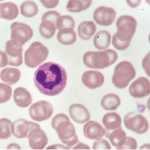The accelerated vascular damage and dysregulated lipoprotein panel were potentially triggered by LDGs and NET formation. “[Although] NETs and LDGs are not currently used as clinical biomarkers of vascular risk, it is possible that they will be incorporated in the future in the clinical decision management in SLE patients,” she adds.
Therapeutic Avenues
New therapeutic avenues to mitigate harmful effects of NETs in SLE include “targeting NET formation, promoting NET clearance or neutralizing NET components,” Dr. Kaplan writes.
SLE therapies that potentially reduce NET formation, number and the harmful effects of NETs include hydroxychloroquine; tofacitinib, a Janus kinase inhibitor; some anti-B cell therapies; and the type I IFN receptor blocker, anifrolumab.
“By elucidating the mechanisms underlying NET-mediated inflammation, clinicians can develop targeted therapies to mitigate disease activity and improve outcomes in lupus patients,” Dr. Kaplan writes.
Investigational agents targeting NETs include PAD4 inhibitors, preventing histone citrullination and NET formation; NADPH oxidase and/or mitochondrial reactive oxygen species (ROS) inhibitors, preventing NETosis; DNase therapy, reducing the pro-inflammatory effects of NETs by degrading their DNA; and anti-IFN therapy, reducing NET-induced inflammation and autoimmunity.
“Further research is needed to validate the diagnostic and therapeutic utility of NET-targeted interventions and optimize their integration into clinical practice,” Dr. Kaplan concludes.
Katie Robinson is a medical writer based in New York.
References
- Bucala R, Solomon DH. Immunology for the rheumatologist: Arthritis & Rheumatology introduces a new problem-based immunology review series with great educational potential. Arthritis Rheumatol. 2024. Jan;76(1):9–10.
- Kaplan MJ. Exploring the role of neutrophil extracellular traps (NETs) in SLE: A clinical case study and comprehensive review. Arthritis Rheumatol. 2024;76.



